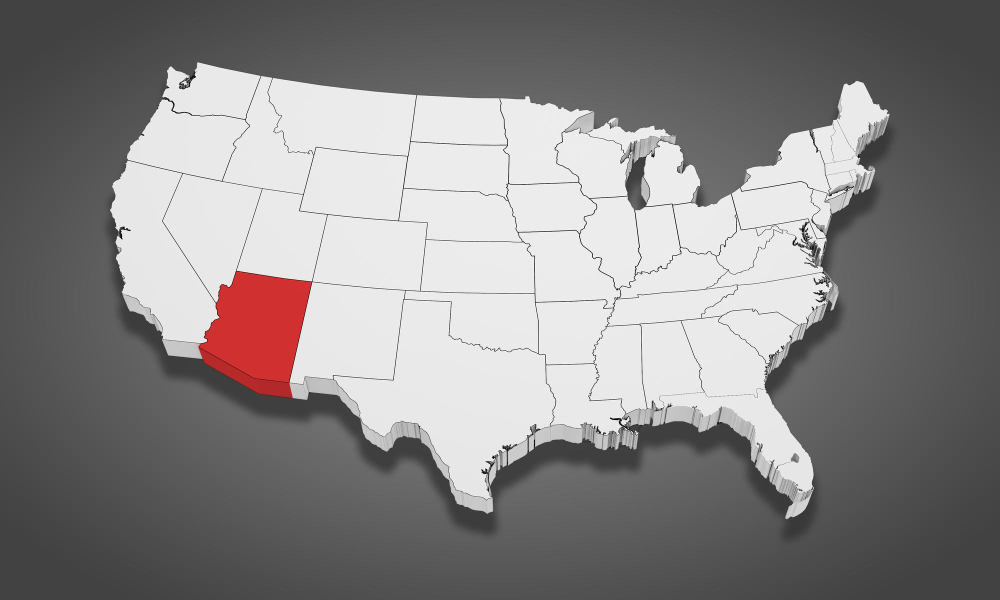| MA in Autism Spectrum Disorders | Master’s in Autism Spectrum Disorders Degree |
| MA in Christian Leadership | Master of Arts Degree in Christian Leadership |
| MA in Christian Ministry | Master’s in Christian Ministry Degree Online |
| MA in Communication | Master of Arts (MA) in Communication: Education Emphasis |
| MA in Curriculum & Instruction | Master’s in Curriculum and Instruction |
| MA in English | Master’s in English: Education Emphasis |
| MA in Higher Education Student Affairs | Master of Arts (MA) in Higher Education Student Affairs |
| MA in History | Master’s in History Education |
| MA in Reading-elementary education | Master of Arts in Reading Education – Elementary Education Emphasis |
| MA in Reading-Secondary education | Master of Arts (MA) in Reading: Secondary Education |
| MA in Teaching English to Speakers of Other Languages | Master’s in TESOL Online and Evening Degree |
| MA in Urban Ministry | Master of Arts (MA) Urban Ministry |
| MA in Youth and Family Ministry | Master’s in Youth and Family Ministry Degree |
| Master of Business Administration | Online Master of Business Administration (MBA) Program |
| Master of Business Administration & MS in Nursing: Nursing Leadership in Health Care Systems | Master of Business Administration & Master of Science in Nursing: Nursing Leadership in Health Care Systems |
| Master of Business Administration and Master of Science in Leadership | Master of Business Administration and Master of Science in Leadership |
| Master of Business Administration Accounting | MBA With Accounting Emphasis |
| Master of Business Administration Cybersecurity | Master of Business Administration with an Emphasis in Cybersecurity |
| Master of Business Administration Finance | Master of Business Administration (MBA) in Finance |
| Master of Business Administration Health Systems Management | MBA in Health Systems Management |
| Master of Business Administration Emphasis in Leadership | Master of Business Administration (MBA) in Leadership |
| Master of Business Administration Marketing | MBA in Marketing Degree Emphasis |
| Master of Business Administration Project Management | Master of Business Administration (MBA) in Project Management |
| Master of Business Administration Sports Business | Master of Business Administration (MBA) in Sports Business |
| Master of Business Administration Strategic Human Resource Management | MBA in HR — Strategic Human Resource Management |
| Master of Education in Early Childhood Education (Does Not Lead to Initial Teacher Licensure) | Master of Education (MEd) in Early Childhood Education |
| Master of Education in Early Childhood Education (Leads to Initial Teacher Licensure) | Master’s in Early Childhood Education – MEd Degree |
| Master of Education in Early Childhood Education and Early Childhood Special Education (Does Not Lead to Licensure) | Non-Licensure |
| Master of Education in Early Childhood Education and Early Childhood Special Education (Leads to Initial Licensure) | Master of Education (MEd) in Early Childhood Special Education |
| Master of Education in Educational Administration | Master’s in Educational Administration Degree |
| Master of Education in Educational Leadership (Advanced Program for Continuing Professional Education) | Master’s in Education Leadership (MEd Degree) |
| Master of Education in Elementary Education (Does Not Lead to Initial Teacher Licensure) | Master of Education (MEd) in Elementary Education |
| Master of Education in Elementary Education (Leads to Initial Teacher Licensure) | Master of Education (MEd) in Elementary Education |
| Master of Education in Elementary Education and Special Education (Does Not Lead to Initial Teacher Licensure) | Master of Education in Elementary and Special Education (Non-IR) |
| Master of Education in Elementary Education and Special Education | Master of Education in Elementary and Special Education |
| Master of Education in School Counseling (Leads to Initial Licensure) | Master’s in School Counseling – MEd Degree |
| Master of Education in Secondary Education with an Emphasis in Humanities (Does Not Lead to Initial Teacher Licensure) | Master’s in Secondary Education – Humanities |
| Master of Education in Secondary Education with an Emphasis in Humanities (Leads to Initial Teacher Licensure) | MEd in Secondary Education – Humanities (Licensure) |
| Master of Education in Secondary Education with an Emphasis in STEM (Does Not Lead to Initial Teacher Licensure) | Master’s in Secondary Education – STEM (Non-Licensure Degree) |
| Master of Education in Secondary Education with an Emphasis in STEM (Leads to Initial Teacher Licensure) | MEd in Secondary Education – STEM (Licensure) |
| Master of Education in Secondary Humanities Education | Master of Education in Secondary Education Humanities Education ITL |
| Master of Education in Secondary STEM Education | Master of Education (MEd) in Secondary STEM Education |
| Master of Education in Special Education (Does Not Lead to Initial Teacher Licensure) | Master of Education (MEd) in Special Education |
| Master of Education in Special Education (Leads to Initial Teacher Licensure) | Master of Education (MEd) in Special Education |
| Master of Education in Special Education: Moderate to Severe | Master’s in Special Education – Moderate to Severe (NITL) |
| Master of Education in Special Education: Moderate to Severe (Leads to Initial Teacher Licensure) | Master of Education (MEd) in Special Education – Moderate to Severe (Licensure) |
| Master of Public Administration Government and Policy | MPA Degree With a Government and Policy Emphasis |
| Master of Public Administration Health Care Management | Master of Public Administration (MPA) in Health Care Management |
| Master of Public Administration Nonprofit Management | Master of Public Administration (MPA) in Nonprofit Management Degree Emphasis |
| Master of Public Health | Master of Public Health (MPH) Degree |
| MS in Accounting | Master of Science in Accounting (MSA) Degree |
| MS in Addiction Counseling | Master’s in Addiction Counseling |
| MS in Biology | Master’s in Biology Education Degree |
| MS in Business Analytics | Master’s in Business Analytics (MSBA) |
| MS in Chemistry | Master’s in Chemistry Education Emphasis Degree |
| MS in Christian Counseling of Substance Use and Addictive Disorders | Master of Science (MS) Christian Counseling: Substance Abuse |
| MS in Clinical Mental Health Counseling | Master’s in Clinical Mental Health Counseling Degree |
| MS in Clinical Mental Health Counseling Childhood and Adolescence Disorders | Child and Adolescent Counseling Graduate Programs – MS in Clinical Mental Health Counseling |
| MS in Clinical Mental Health Counseling Christian Counseling | MS Mental Health Counseling – Christian Counseling |
| MS in Clinical Mental Health Counseling, Marriage and Family Therapy | Master of Science (MS) in Clinical Mental Health Counseling – Marriage and Family Therapy Degree |
| MS in Clinical Mental Health Counseling Trauma | Master’s (MS) in Clinical Mental Health Counseling With Trauma Counseling Emphasis |
| MS in Computer Science | Online Master’s in Computer Science Degree |
| MS in Criminal Justice Law Enforcement | Online Master’s in Criminal Justice and Law Enforcement |
| MS in Criminal Justice Legal Studies | Master of Science in Legal Studies |
| MS in Cybersecurity | Master of Science in Cybersecurity |
| MS in Data Science | Data Science Master’s Degree |
| MS in Forensic Science | Online Master’s in Forensic Science Degree |
| MS in Health Administration | Online MSHA Degree – Master of Science in Health Administration |
| MS in Health Administration Health Care Quality and Patient Safety | Master’s in Health Administration with an Emphasis on Health Care Quality and Patient Safety |
| MS in Health Informatics | Master’s in Health Informatics Degree |
| MS in Information Assurance and Cybersecurity | Master of Science (MS) in Information Assurance and Cybersecurity Online |
| MS in Information Technology | Master’s in Information Technology (IT) Degree |
| MS in Information Technology Management | Master’s in IT Management Degree |
| MS in Instructional Design | Master’s in Instructional Design Degree |
| MS in Instructional Technology | Master’s in Instructional Technology Degree |
| MS in Leadership | Master of Science (MS) in Leadership Degree |
| MS in Leadership Homeland Security and Emergency Management | Master’s in Emergency Management and Homeland Security Emphasis |
| MS in Mental Health and Wellness | Master of Science (MS) in Mental Health and Wellness |
| MS in Mental Health and Wellness Christian Ministry | Mental Health and Wellness: Master’s in Christian Ministry |
| MS in Mental Health and Wellness Community Mental Health Administration | Masters in Mental Health and Wellness With Community Mental Health Administration Emphasis |
| MS in Mental Health and Wellness Family Dynamics | MS in Mental Health and Wellness With a Family Dynamics Emphasis |
| MS in Mental Health and Wellness with an Emphasis on Grief and Bereavement | Master of Science (MS) Grief and Bereavement Degree |
| MS in Mental Health and Wellness Integrated Health | MS in Mental Health and Wellness: Integrated Health Emphasis |
| MS in Mental Health and Wellness Prevention | Master of Science (MS) Mental Health and Wellness: Prevention |
| MS in Nursing Health Care Quality & Patient Safety | Master of Science in Nursing in Health Care Quality and Patient Safety |
| MS in Nursing Health Informatics | Master’s (MSN) in Nursing Informatics Emphasis |
| MS in Nursing Leadership in Health Care Systems | MS in Nursing: Leadership in Healthcare Systems Emphasis |
| MS in Nursing Nursing Education | MSN in Nursing Education Degree |
| MS in Nursing Public Health Nursing | Master’s in Public Health Nursing Degree Emphasis |
| MS in Nursing: Acute Care Nurse Practitioner Adult-Gerontology | Adult-Gerontology Acute Care Nurse Practitioner (AGACNP) MSN |
| MS in Nursing: Family Nurse Practitioner | Master of Science in Nursing: Family Nurse Practitioner (MSN FNP) |
| MS in Psychology Forensic Psychology | Master’s in Forensic Psychology Degree Emphasis |
| MS in Psychology General Psychology | Master of Science in Psychology With a General Psychology Emphasis |
| MS in Psychology GeroPsychology | Geropsychology Master’s Program |
| MS in Psychology Health Psychology | Master’s in Health Psychology |
| MS in Psychology Human Factors Psychology | Master’s in Psychology Degree With Human Factors Psychology Emphasis |
| MS in Psychology Industrial and Organizational Psychology | Master’s in Psychology With an Emphasis in Industrial Organizational Psychology |
| MS in Psychology Life Coaching | Master’s in Psychology With Life Coaching Emphasis |
| MS in Sociology Education | Master’s in Sociology Degree With an Emphasis in Education |
| MS in Software Development | Master’s in Software Development Degree |
| MS in Software Engineering | Online Master’s in Software Engineering Degree Program |
| Master of Social Work | Master’s in Social Work |



 Edited By
Edited By 
